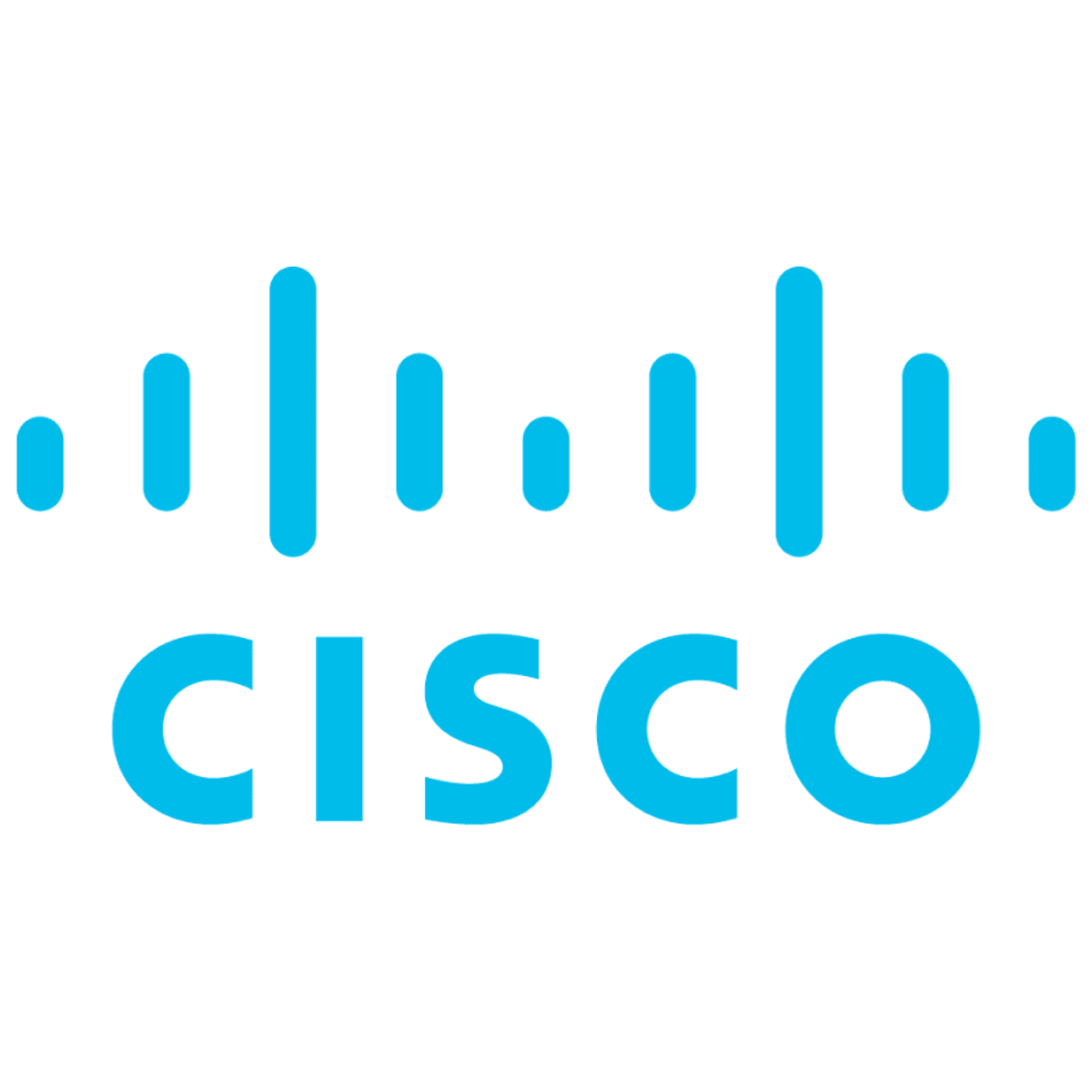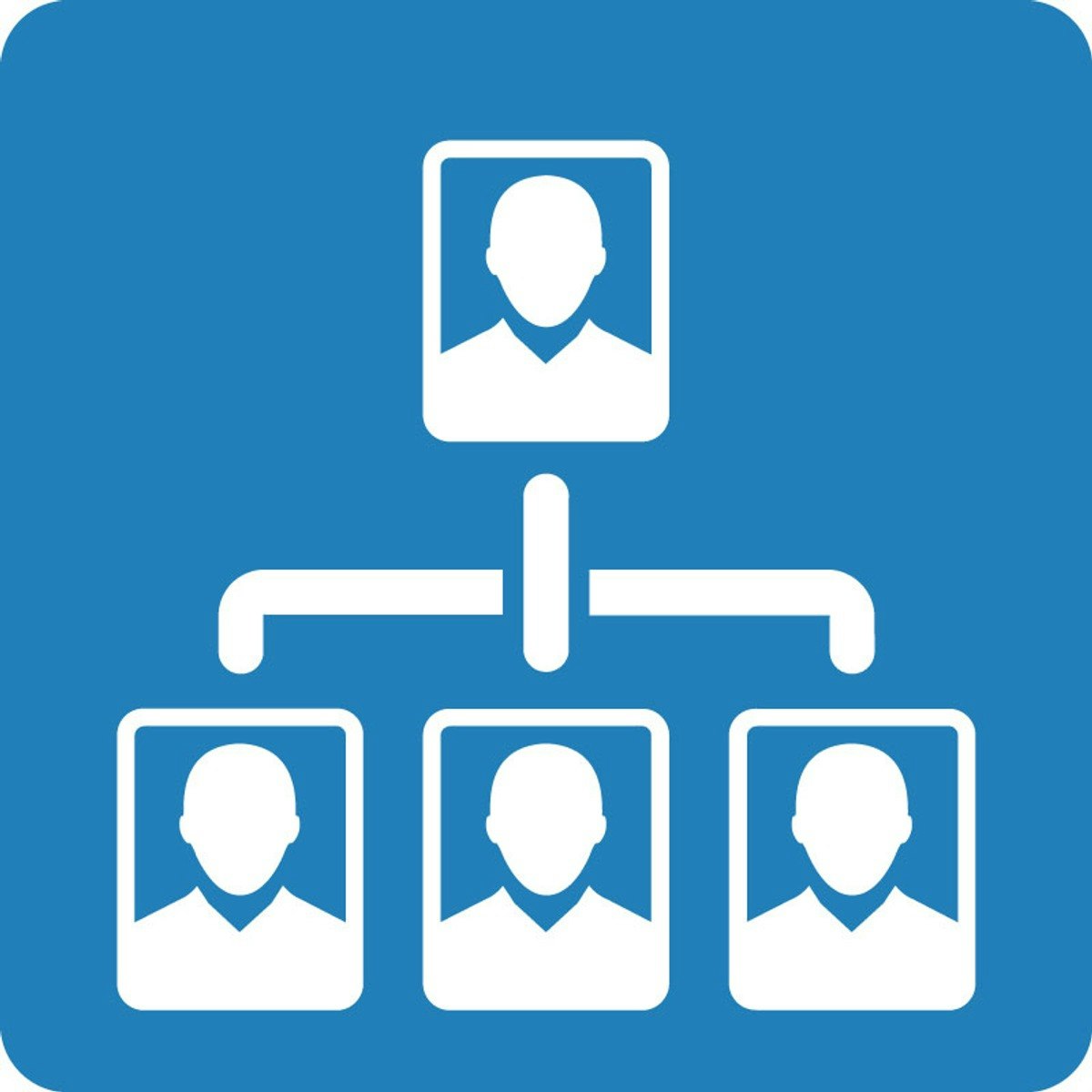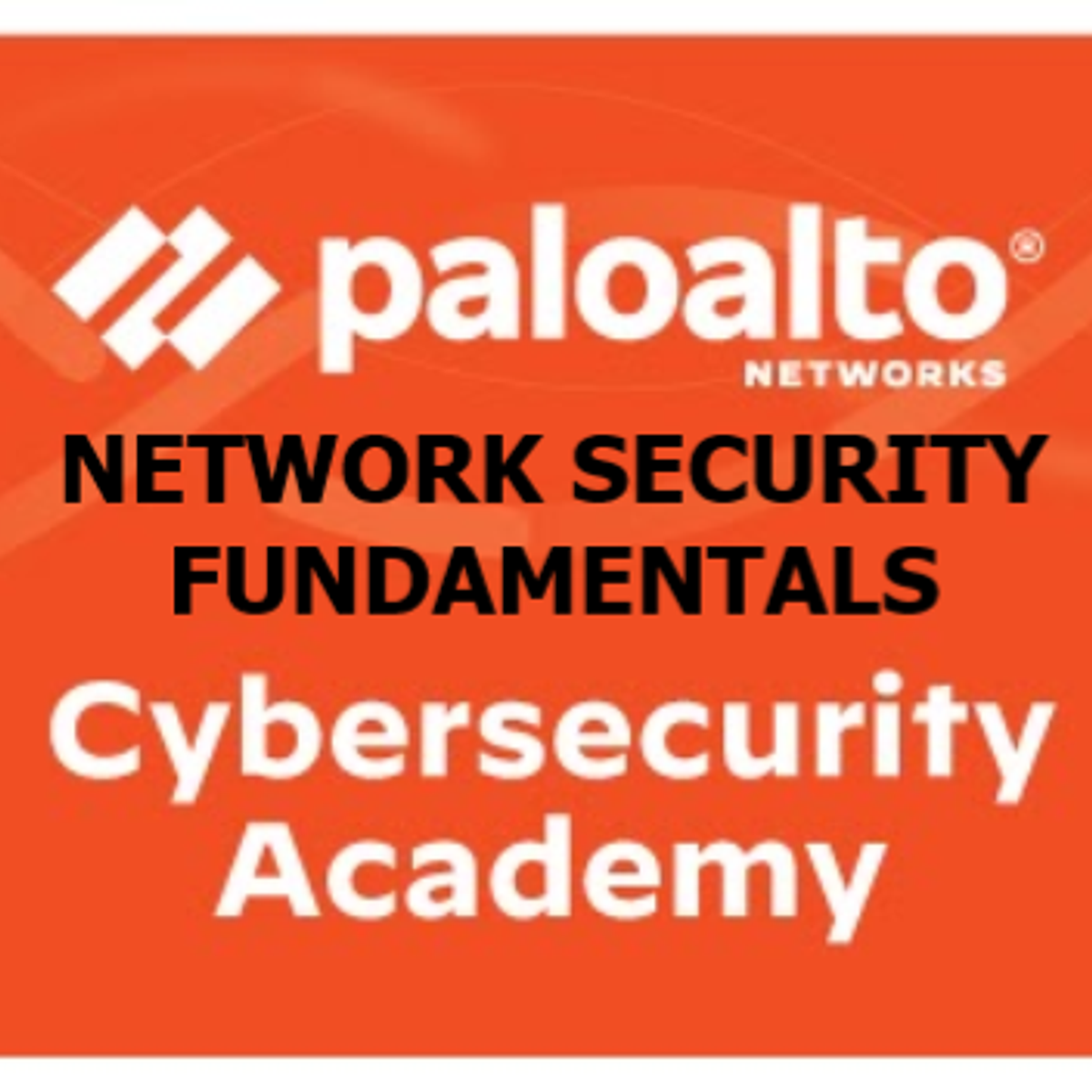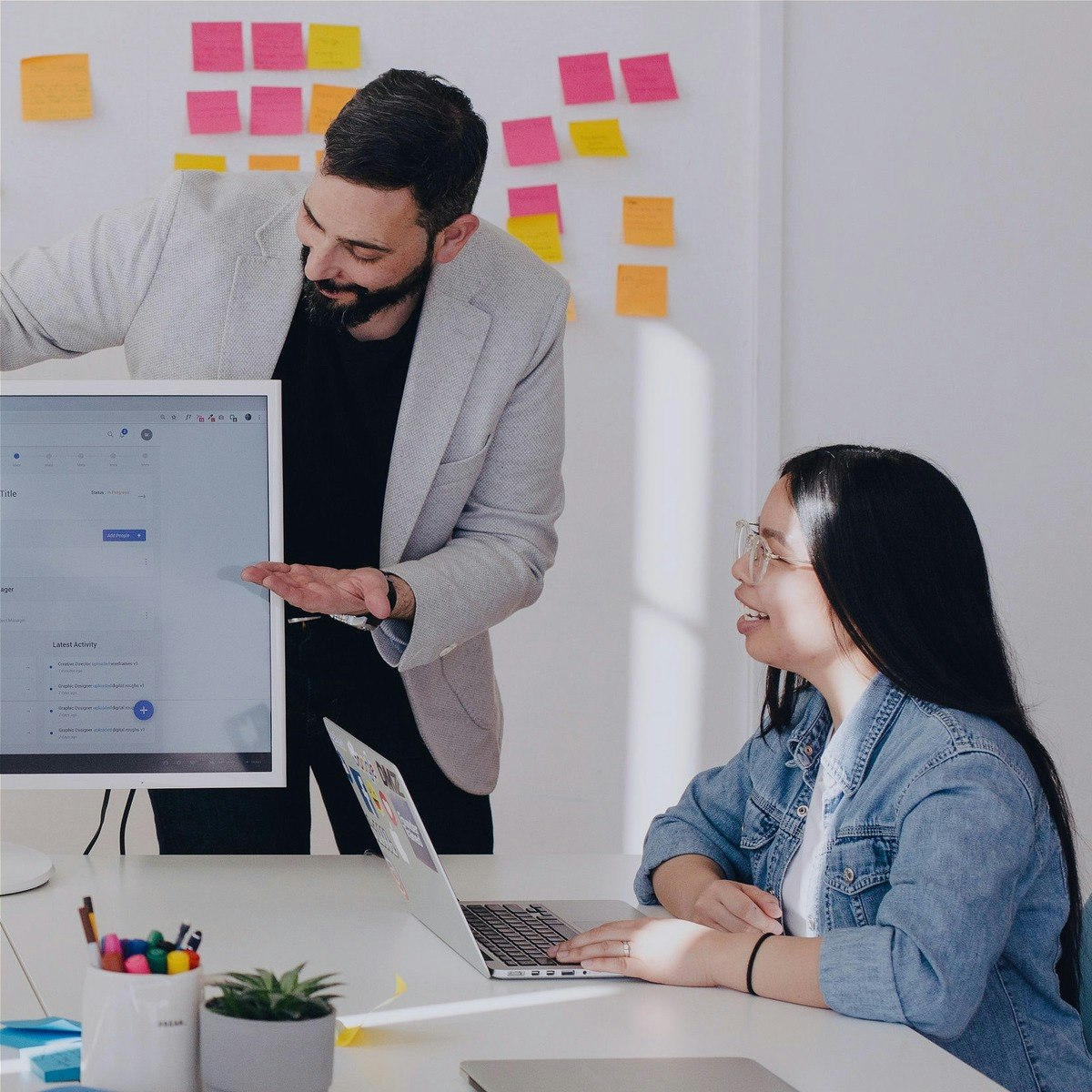Network Architect
Navigating the Blueprint of Connectivity: A Career as a Network Architect
A Network Architect is a high-level IT professional responsible for designing and building data communication networks. These can range from local area networks (LANs) and wide area networks (WANs) to intranets and complex cloud infrastructures. They are the master planners who ensure that an organization's digital pathways are robust, secure, and aligned with its strategic objectives. Think of them as the chief designers of the information superhighways that businesses and institutions rely on every day.
Working as a Network Architect can be incredibly engaging. You'll be at the forefront of technological advancements, constantly evaluating and implementing new solutions to enhance network performance and security. The role often involves a satisfying blend of deep technical work, strategic planning, and collaboration with various teams. Seeing a complex network design come to life and function seamlessly, empowering an entire organization, is a significant reward of this profession.
Introduction to Network Architecture
The world runs on interconnected systems, and at the heart of this connectivity lies network architecture. This field is crucial for virtually every modern enterprise, enabling communication, data exchange, and access to critical applications and services. From small businesses to global corporations, a well-designed network is fundamental to operational efficiency and success.
Definition of Network Architecture and Its Role in Modern IT Infrastructure
Network architecture refers to the comprehensive plan or blueprint of an organization's communication networks. It encompasses the design of local area networks (LANs), wide area networks (WANs), intranets, extranets, and increasingly, cloud-based and hybrid network solutions. This design dictates how various hardware components like routers, switches, and firewalls, along with software and communication protocols, interact to form a cohesive and functional system. In essence, network architecture provides the framework that allows data to flow efficiently and securely, enabling all other IT services and business operations.
In today's digitally driven world, the role of network architecture is more critical than ever. It forms the backbone of an organization's IT infrastructure, supporting everything from basic email communication to complex enterprise applications, e-commerce platforms, and cloud services. A robust and scalable network architecture ensures business continuity, facilitates innovation, and enables organizations to adapt to changing technological landscapes and business demands. Without a solid network design, businesses can suffer from performance issues, security vulnerabilities, and an inability to scale or adopt new technologies effectively.
The design process involves understanding an organization's specific needs, including bandwidth requirements, security considerations, and future growth projections. Network architects model, analyze, and plan network infrastructures to meet these demands, ensuring that the network can handle current and anticipated traffic loads while maintaining optimal performance and reliability.
Key Responsibilities of a Network Architect
A Network Architect wears many hats, blending technical expertise with strategic thinking and project management. Their primary responsibility is to design and implement computer and information networks that align with an organization's goals. This involves creating detailed plans and layouts for data communication networks, considering factors like security, scalability, and cost-effectiveness.
They present these designs to management, clients, and technical staff, explaining complex concepts in an understandable manner. Once a design is approved, the architect often oversees or participates in the deployment and configuration of network equipment, ensuring proper implementation through rigorous testing. Documentation is another crucial aspect, as they create comprehensive records of network designs and processes for future reference, maintenance, and upgrades.
Beyond initial design and deployment, Network Architects are often involved in managing and troubleshooting networks, analyzing performance data, and recommending new technologies or upgrades to enhance efficiency and security. They work closely with other IT professionals, including network administrators and cybersecurity teams, as well as with vendors to manage equipment and software.
Industries and Sectors Where Network Architects Are Critical
Network Architects are indispensable across a wide array of industries. Any organization that relies on a robust and secure network to conduct its operations requires the expertise of these professionals. The U.S. Bureau of Labor Statistics (BLS) highlights that computer systems design and related services employ a significant number of network architects. This sector involves companies that specialize in creating and managing IT solutions for other businesses.
Telecommunications companies are also major employers, as network architects are essential for designing and maintaining the vast infrastructures that provide internet, phone, and data services. Financial services and insurance companies heavily rely on secure and high-performance networks to handle sensitive data and transactions, making network architects critical to their operations. Healthcare organizations require robust networks for managing patient records, medical imaging, and telemedicine services. Government agencies at all levels also employ network architects to design and manage their complex communication systems.
Other significant sectors include education, manufacturing, and increasingly, any business leveraging cloud computing, as these transitions require careful network planning and integration. Essentially, as digital transformation continues across all industries, the demand for skilled Network Architects to design, implement, and manage the underlying network infrastructures will remain strong. You can explore various IT and networking courses relevant to these industries on OpenCourser's IT & Networking browse page.
Evolution of the Role with Technological Advancements
The role of a Network Architect has undergone significant transformation driven by rapid technological advancements. Initially focused on physical on-premises networks, the scope has expanded dramatically with the advent of virtualization, cloud computing, the Internet of Things (IoT), and software-defined networking (SDN). Architects now design and manage complex hybrid environments that seamlessly integrate on-premises infrastructure with public and private cloud services.
The rise of cybersecurity threats has also profoundly impacted the role. Security is no longer an afterthought but a core component of network design, leading to the adoption of principles like zero-trust architecture. Network Architects must possess a deep understanding of security protocols and best practices to build resilient and secure networks. Furthermore, the increasing need for network automation and orchestration, driven by tools like Ansible and Python scripting, requires architects to have programming and automation skills to manage increasingly complex and dynamic network environments efficiently.
Emerging technologies such as 5G, edge computing, and artificial intelligence (AI) for network optimization continue to reshape the landscape. Network Architects must continuously learn and adapt to these new paradigms, ensuring that the networks they design can support these innovations and deliver the performance, scalability, and reliability that modern applications demand. This constant evolution makes the role challenging yet highly rewarding for those passionate about staying at the cutting edge of technology.
Core Responsibilities of a Network Architect
The responsibilities of a Network Architect are multifaceted, demanding a blend of technical prowess, strategic thinking, and strong communication skills. They are the visionaries who translate business requirements into tangible network designs and ensure these complex systems function optimally and securely.
Designing Secure and Scalable Network Infrastructures
A primary responsibility of a Network Architect is to design network infrastructures that are both secure and scalable. This involves a meticulous process of understanding an organization's current and future needs, including data traffic patterns, performance requirements, and business objectives. The architect then creates comprehensive blueprints for LANs, WANs, intranets, and cloud or hybrid network environments. These designs must be robust enough to handle anticipated growth and flexible enough to adapt to evolving technologies.
Security is paramount in network design. Architects must integrate security measures from the ground up, incorporating firewalls, intrusion detection/prevention systems, VPNs, and access control mechanisms. They need to stay abreast of the latest security threats and vulnerabilities to ensure the network is resilient against attacks. Scalability ensures that the network can grow with the organization without requiring a complete overhaul, which involves choosing appropriate hardware, software, and network topologies that can accommodate increased users, data, and services.
This design phase also includes selecting appropriate technologies and vendors, considering factors like cost, performance, and interoperability. The architect must produce detailed documentation of the network design, which serves as a reference for implementation, troubleshooting, and future upgrades.
To gain foundational knowledge in network design principles, aspiring architects can explore various online courses. These courses often cover essential concepts and practical skills needed for creating effective network solutions.
For those looking to delve deeper into network design and related technologies, several books offer comprehensive insights and practical guidance.
Collaboration with Cybersecurity Teams and Software Engineers
Network Architects rarely work in isolation; effective collaboration is key to their success. They frequently interact with cybersecurity teams to ensure that network designs incorporate robust security measures and comply with industry best practices and regulatory requirements. This partnership involves discussing potential threats, implementing security protocols, and responding to security incidents. The synergy between network architecture and cybersecurity is crucial for protecting an organization's digital assets.
Collaboration also extends to software engineers and application developers. As modern applications heavily rely on network performance and connectivity, architects must understand application requirements to design networks that can support them effectively. This might involve discussions about bandwidth needs, latency sensitivity, and API integrations. Ensuring seamless communication between applications and the underlying network infrastructure is vital for optimal user experience and operational efficiency.
Furthermore, Network Architects liaise with other IT professionals, such as systems administrators, database administrators, and IT managers, to ensure holistic alignment of the network with the overall IT strategy. They also work with external vendors to evaluate new technologies, manage equipment procurement, and resolve technical issues. Strong interpersonal and communication skills are therefore essential for navigating these diverse collaborations.
Budgeting and Cost-Benefit Analysis for Network Solutions
Beyond the technical aspects, Network Architects play a significant role in the financial planning of network projects. They are often responsible for developing budgets and conducting cost-benefit analyses for proposed network solutions. This requires a thorough understanding of the costs associated with hardware, software, licensing, implementation, and ongoing maintenance.
Architects must evaluate different technological options not only for their technical merits but also for their financial implications. They need to justify investments in network infrastructure by demonstrating how these solutions will deliver value to the organization, whether through improved performance, enhanced security, increased efficiency, or support for new business initiatives. This involves presenting clear and concise financial justifications to management and stakeholders.
A crucial part of this responsibility is lifecycle cost management. This means considering the total cost of ownership (TCO) over the lifespan of the network components, including initial purchase, operational expenses, and eventual replacement or upgrade costs. Effective budgeting and cost analysis ensure that network projects are financially viable and deliver a positive return on investment for the organization.
Understanding how to balance technical requirements with financial constraints is a critical skill. For those interested in the financial aspects of IT projects, exploring resources on IT management and financial planning can be beneficial. While not specific to network budgeting, general project management principles are often applicable.
Troubleshooting and Optimizing Network Performance
Even the best-designed networks can encounter issues. A key responsibility of Network Architects is to oversee or participate in advanced troubleshooting efforts to diagnose and resolve complex network problems. This requires deep analytical skills and a thorough understanding of network protocols, hardware, and software. They analyze network traffic, monitor performance metrics, and use diagnostic tools to identify bottlenecks, points of failure, or security breaches.
Optimizing network performance is an ongoing task. Network Architects continuously evaluate the network's efficiency and look for ways to improve it. This might involve upgrading hardware or software, reconfiguring network devices, implementing quality of service (QoS) policies to prioritize critical traffic, or adopting new technologies that enhance speed and reliability. They stay informed about emerging trends and tools in network monitoring and optimization to ensure the network operates at peak performance.
This responsibility often involves working under pressure, especially when network outages impact business operations. The ability to quickly identify root causes and implement effective solutions is crucial. Documentation of troubleshooting procedures and performance tuning activities is also important for maintaining a healthy and efficient network environment.
For those aiming to sharpen their troubleshooting and network optimization skills, numerous online courses offer practical insights and hands-on labs.
Formal Education Pathways
Embarking on a career as a Network Architect typically begins with a strong educational foundation. While practical experience is paramount, formal education provides the necessary theoretical knowledge and analytical skills. This section outlines the common educational routes and certifications that aspiring Network Architects pursue.
For those exploring options, OpenCourser's Computer Science category offers a wide range of courses that can build a solid base for this career.
Relevant Undergraduate Degrees
A bachelor's degree is often the starting point for a career in network architecture. Employers typically look for candidates with degrees in fields such as Computer Science, Information Technology, Network Engineering, or Electrical Engineering. These programs provide a broad understanding of computing principles, network fundamentals, operating systems, and database management, which are all crucial for a Network Architect.
Curricula in these degree programs often include courses on network design, network security, data communications, and systems analysis. Hands-on laboratory work and projects are common, allowing students to gain practical experience with networking equipment and simulation tools. Some universities may offer specialized tracks or concentrations in networking or cybersecurity, which can be particularly beneficial for aspiring Network Architects.
While a specific degree isn't always a rigid requirement if one has substantial experience and certifications, a relevant bachelor's degree provides a structured learning path and is preferred by many employers, especially for entry-level and mid-career positions that serve as stepping stones to an architect role. It demonstrates a commitment to the field and a foundational level of knowledge.
Consider supplementing your degree with online courses that offer specialized knowledge in networking. For instance, understanding the fundamentals of computer networking is crucial.
Certifications and Their Value
In the IT industry, and particularly in networking, certifications play a vital role in validating skills and knowledge. For Network Architects, certifications can significantly enhance career prospects and demonstrate expertise in specific technologies or vendor platforms. Widely recognized certifications include Cisco's Certified Network Associate (CCNA) and Certified Network Professional (CCNP). CompTIA Network+ and Security+ are also valuable foundational certifications.
The CCNA provides a solid grounding in network fundamentals, IP addressing, routing, switching, and network security. Moving up, the CCNP offers more advanced knowledge in areas like enterprise networking, collaboration, data center, or security, depending on the chosen specialization. These certifications often involve rigorous exams and sometimes practical labs, ensuring that certified individuals possess both theoretical understanding and hands-on skills.
Many employers value or even require specific certifications, especially those related to the technologies they use. Certifications can help bridge skills gaps, keep professionals updated with the latest advancements, and make a candidate more competitive in the job market. They signal a commitment to continuous learning, which is essential in the rapidly evolving field of network technology. For those considering certifications, exploring online preparation courses can be highly beneficial.
These courses can provide targeted preparation for certification exams.
Graduate Programs Focusing on Network Design or Cybersecurity
While a bachelor's degree and relevant experience are often sufficient to become a Network Architect, a master's degree can provide a deeper level of expertise and may be preferred for more senior or specialized roles. Graduate programs in areas like Network Engineering, Cybersecurity, Information Systems, or Telecommunications Management can offer advanced knowledge in network design principles, security architectures, network management, and emerging technologies.
A Master of Business Administration (MBA) with a concentration in Information Systems is another option that some employers find attractive, particularly for roles that involve significant strategic planning, budgeting, and leadership responsibilities. These programs often combine technical coursework with business and management education, preparing graduates for leadership positions within IT departments.
Graduate studies can also provide opportunities for research and specialization in cutting-edge areas of networking. For individuals aiming for highly specialized roles or positions in research and development, a master's degree or even a Ph.D. might be beneficial. However, for most practicing Network Architects, the combination of a bachelor's degree, strong experience, and relevant certifications is the more common pathway.
Online learning platforms offer advanced courses that can complement or even form part of a graduate-level understanding of network systems and security.
PhD Research Areas Influencing Network Architecture Trends
While a Ph.D. is not a typical requirement for most Network Architect positions in the industry, research at the doctoral level plays a crucial role in shaping the future of network architecture. Academic research explores new paradigms, protocols, and technologies that eventually find their way into commercial applications and influence how networks are designed and managed. Key research areas include Software-Defined Networking (SDN), Network Function Virtualization (NFV), and the evolution of internet architecture itself.
Other significant areas of Ph.D. research influencing the field include advancements in wireless communication (such as 6G and beyond), network security (e.g., quantum cryptography, advanced threat detection), network automation and AI-driven network management, edge and fog computing architectures, and the development of resilient and self-healing networks. Research into ultra-low latency networks for applications like autonomous vehicles and remote surgery also pushes the boundaries of network design.
Network Architects who stay aware of these research trends, perhaps by reading academic papers, attending conferences, or taking advanced courses, can better anticipate future technological shifts and incorporate innovative solutions into their designs. While direct involvement in Ph.D.-level research is rare for practitioners, understanding its outputs is increasingly valuable for staying at the forefront of the field.
For those interested in the more theoretical and cutting-edge aspects of networking, exploring topics like network science and advanced algorithms can be enlightening.
Career Progression and Entry Points
The path to becoming a Network Architect is typically a journey of accumulating experience and expertise. It's rarely an entry-level position; rather, it's a role achieved after several years in related IT fields. Understanding the common entry points and progression routes can help aspiring architects plan their careers effectively.
If you are considering a career change or are new to IT, know that with dedication and continuous learning, reaching a role like Network Architect is an attainable goal. The journey might seem long, but each step builds valuable skills and insights.
Typical Entry-Level Roles
Most Network Architects begin their careers in more foundational IT roles. Positions like Network Administrator, Network Technician, or Systems Administrator are common starting points. These roles provide essential hands-on experience in managing, maintaining, and troubleshooting existing network infrastructures. Working as a help desk technician or in IT support can also offer a foundational understanding of network issues from a user perspective, which is valuable experience.
In these entry-level positions, individuals learn the practical aspects of networking, such as configuring routers and switches, managing user access, monitoring network performance, and resolving connectivity issues. This groundwork is crucial for developing the deep understanding of network operations required for an architect role. Some may also start as junior network engineers, assisting senior engineers and architects with design and implementation tasks.
Gaining experience in these roles for several years, typically five to ten, is often a prerequisite for moving into a Network Architect position. During this time, continuous learning through on-the-job training, pursuing certifications like the CCNA or Network+, and potentially further education, is highly recommended to build the necessary skill set.
For individuals starting out, foundational courses in IT support and networking can provide the necessary skills to land these entry-level positions.
Mid-Career Transitions from Software Engineering or Cybersecurity
It's also possible to transition into a Network Architect role from adjacent fields like software engineering or cybersecurity. Professionals in these areas often possess skills and knowledge that are highly relevant to network architecture. For instance, software engineers, especially those working on networked applications or distributed systems, develop a strong understanding of network protocols, APIs, and how applications interact with the network.
Cybersecurity professionals, such as Security Engineers or Analysts, have deep expertise in network security principles, threat landscapes, and security technologies. This security-focused background is increasingly valuable for Network Architects, as security is a critical component of modern network design. Transitioning might involve acquiring more specialized networking knowledge, perhaps through certifications like CCNP or advanced courses focusing on network design and cloud networking.
For those considering such a pivot, highlighting transferable skills is key. Problem-solving abilities, systems thinking, project management experience, and a strong understanding of IT infrastructure are all assets. Networking with professionals in the network architecture field and seeking mentorship can also facilitate a smoother transition. Remember, your existing expertise is a strong foundation, and with targeted learning, a move into network architecture can be a rewarding progression.
Online courses can help bridge any knowledge gaps for professionals transitioning from related fields.
Leadership Roles Beyond Network Architect
The role of a Network Architect can serve as a springboard to various senior leadership positions within an organization's IT department. With extensive experience in designing and managing critical network infrastructure, combined with strong leadership and strategic thinking skills, architects are well-positioned for advancement. One common path is to become a Lead Network Architect or a Principal Network Architect, taking on more responsibility for complex projects, mentoring junior architects, and shaping the overall network strategy.
Further progression can lead to roles such as IT Manager, Director of IT, or even Chief Technology Officer (CTO) or Chief Information Officer (CIO) in some organizations. These positions involve broader responsibilities, including managing entire IT departments, developing long-term technology roadmaps, aligning IT strategy with business goals, and overseeing IT budgets and investments. The strategic planning, problem-solving, and vendor management skills honed as a Network Architect are highly transferable to these executive roles.
Some Network Architects may also choose to specialize further, becoming experts in niche areas like cloud network architecture, cybersecurity architecture, or network automation. Others might transition into consulting roles, leveraging their expertise to advise multiple clients on network design and strategy. The career path offers diverse opportunities for growth and leadership for those with the ambition and skills to pursue them.
For those aspiring to leadership, courses in IT management and strategy can be beneficial.
Impact of Certifications vs. Experience on Promotions
When it comes to promotions in the field of network architecture, both certifications and experience play crucial roles, often complementing each other. Experience is generally considered paramount, as the ability to design, implement, and troubleshoot complex networks in real-world scenarios is developed through years of hands-on work. Employers look for a proven track record of successful projects and the ability to handle the challenges that arise in dynamic network environments.
However, certifications are also highly valued and can significantly impact career progression. Advanced certifications like the Cisco Certified Internetwork Expert (CCIE) or specialized vendor certifications demonstrate a high level of expertise and commitment to the field. They can differentiate a candidate for senior roles and promotions, especially when combined with substantial experience. Certifications can also be crucial for staying updated with new technologies and methodologies, which is vital for advancement in a rapidly evolving field.
For many, the ideal combination is extensive practical experience augmented by relevant, up-to-date certifications. Experience builds problem-solving skills and practical wisdom, while certifications validate specific knowledge and proficiency with particular technologies or standards. In many cases, experience might open doors to architect roles, while advanced certifications can help secure more senior, specialized, or leadership positions.
Continuous learning, whether through formal certifications or other means, is key. Explore resources like the OpenCourser Learner's Guide for tips on how to structure your learning and make the most of online courses and certifications.
Technical Skills and Tools
A Network Architect must possess a deep and broad set of technical skills, coupled with proficiency in various tools and technologies. The ability to understand and work with complex network protocols, design for cloud environments, automate tasks, and adapt to emerging technologies is crucial for success in this demanding role.
Network Protocols (TCP/IP, BGP, OSPF)
A fundamental understanding of network protocols is non-negotiable for a Network Architect. The TCP/IP suite, which forms the basis of the internet and most modern networks, must be second nature. This includes in-depth knowledge of IP addressing (both IPv4 and IPv6), subnetting, DNS, DHCP, and transport protocols like TCP and UDP.
Routing protocols are equally critical. Architects need to be proficient in Interior Gateway Protocols (IGPs) like OSPF (Open Shortest Path First) and EIGRP (Enhanced Interior Gateway Routing Protocol) for routing within an autonomous system. For routing between autonomous systems, a strong grasp of BGP (Border Gateway Protocol) is essential, especially for enterprises with multiple internet connections or those connecting to service providers. Understanding how these protocols operate, their configuration options, and troubleshooting techniques is vital for designing efficient and resilient networks.
Knowledge of other protocols, such as those related to network security (e.g., IPsec, SSL/TLS) and network management (e.g., SNMP), is also important. As networks evolve, new protocols and extensions emerge, requiring continuous learning to stay current.
Numerous online courses offer deep dives into these essential protocols.
Cloud Infrastructure (AWS, Azure) and Hybrid Networks
With the pervasive adoption of cloud computing, Network Architects must be adept at designing and managing networks that extend into or are entirely based in cloud environments. This includes proficiency with major cloud platforms like Amazon Web Services (AWS), Microsoft Azure, and Google Cloud Platform (GCP). Architects need to understand the networking services offered by these providers, such as virtual private clouds (VPCs), load balancers, firewalls, and direct connect options.
Designing hybrid networks, which integrate on-premises infrastructure with cloud resources, is a common requirement. This involves creating secure and reliable connectivity between different environments, often using VPNs or dedicated connections. Architects must consider factors like data sovereignty, latency, bandwidth costs, and security when designing hybrid cloud network architectures. Knowledge of multi-cloud strategies is also becoming increasingly relevant.
Understanding how to leverage cloud-native networking features to build scalable, resilient, and cost-effective solutions is a key skill. This includes concepts like infrastructure as code (IaC) for provisioning network resources in the cloud and understanding the shared responsibility model for security.
Many courses focus specifically on cloud networking for platforms like AWS and Google Cloud.
Automation Tools (Ansible, Python Scripting)
Network automation is transforming how networks are managed, and Network Architects are increasingly expected to have skills in this area. Automation tools and scripting languages help in configuring network devices, deploying services, monitoring network health, and performing routine maintenance tasks more efficiently and with fewer errors. This is particularly important for large and complex networks.
Proficiency in scripting languages like Python is highly valuable for network automation. Python, with its extensive libraries (e.g., Netmiko, NAPALM), allows architects and engineers to interact with network devices programmatically. Configuration management tools like Ansible, Puppet, and Chef are also widely used for automating network provisioning and management. Ansible, in particular, has gained significant traction in the networking domain due to its agentless architecture and ease of use.
Understanding concepts like Infrastructure as Code (IaC) and an API-driven approach to network management is also beneficial. By embracing automation, Network Architects can improve network agility, reduce operational overhead, and ensure consistency across the network infrastructure. These skills are becoming essential for modern network design and operations.
Online courses are available to help you learn Python for network automation and tools like Ansible.
For those seeking to build a strong foundation in network automation, books on the subject can be excellent resources.
Emerging Technologies (SD-WAN, 5G Integration)
The field of networking is constantly evolving, and Network Architects must stay abreast of emerging technologies that can impact network design and strategy. Software-Defined Wide Area Network (SD-WAN) is one such technology that has gained widespread adoption. SD-WAN offers more agile, cost-effective, and manageable WAN solutions compared to traditional approaches, by abstracting network hardware from its control mechanism. [pwx7t9]
The rollout of 5G technology is another significant development, promising higher bandwidth, lower latency, and greater connectivity for a vast number of devices. Network Architects need to understand how 5G will impact enterprise networks, particularly in areas like IoT, mobile workforce connectivity, and edge computing. Designing networks that can effectively integrate with and leverage 5G capabilities will be crucial.
Other emerging areas include advanced network security paradigms like SASE (Secure Access Service Edge), the continued evolution of IoT and its impact on network scale and security, and the increasing use of AI and machine learning for network monitoring, predictive maintenance, and autonomous network operations. A proactive approach to learning about these technologies is essential for future-proofing network designs.
Courses on these cutting-edge technologies can help architects prepare for the future of networking.
[course] 5G EssentialsIndustry Trends Shaping Network Architecture
The landscape of network architecture is dynamic, continually reshaped by emerging technologies and evolving business needs. Staying ahead of these trends is crucial for Network Architects to design resilient, efficient, and future-proof networks. Several key trends are currently influencing the direction of network design and management.
Shift to Zero-Trust Security Models
The traditional perimeter-based security model, where everything inside the network is trusted by default, is increasingly inadequate in the face of sophisticated cyber threats and distributed workforces. This has led to a significant shift towards Zero-Trust security models. The core principle of Zero Trust is "never trust, always verify," meaning that no user or device is automatically trusted, regardless of whether it is inside or outside the corporate network.
For Network Architects, adopting a Zero-Trust approach involves designing networks with micro-segmentation, strong identity and access management (IAM), multi-factor authentication (MFA), and continuous monitoring of network traffic and user behavior. This requires a granular approach to policy enforcement, where access to resources is granted on a least-privilege basis and dynamically assessed based on context. Implementing Zero Trust can be complex, often requiring a phased approach and integration with various security tools and platforms.
This paradigm shift necessitates a deep understanding of security principles and how they can be embedded into the network fabric itself. Architects must work closely with cybersecurity teams to develop and implement Zero-Trust strategies that enhance security without unduly hindering productivity.
Understanding network security is fundamental to implementing zero-trust models. Online courses can provide valuable insights into network security principles and practices.
Books on internet security can provide in-depth knowledge relevant to designing secure networks.
Edge Computing and IoT Expansion
The proliferation of Internet of Things (IoT) devices and the rise of edge computing are significantly impacting network architecture. Edge computing brings computation and data storage closer to the sources of data generation – typically IoT devices and end-users. This is done to reduce latency, conserve bandwidth, and enable real-time processing for applications like autonomous vehicles, industrial automation, and smart cities.
Network Architects must design networks that can support the massive scale and unique traffic patterns of IoT deployments. This includes ensuring reliable connectivity for a vast number of diverse devices, managing the data generated by these devices, and securing the expanded attack surface that IoT introduces. Edge computing requires architects to design distributed network infrastructures with compute resources located at the network edge, which could be in local data centers, branch offices, or even at cell tower sites.
Challenges include managing distributed infrastructure, ensuring security at the edge, and providing seamless connectivity between edge locations, centralized data centers, and the cloud. The integration of 5G technology is also closely linked with edge computing, providing the high-speed, low-latency connectivity needed for many edge applications.
Courses focusing on IoT and related communication technologies can help architects address these new challenges.
Sustainability in Network Design
Sustainability, or "green networking," is an increasingly important consideration in network architecture. As data centers and network infrastructures consume significant amounts of energy, there's a growing focus on designing networks that are more energy-efficient and have a lower environmental impact. This involves several strategies that Network Architects can incorporate into their designs.
One approach is to select energy-efficient hardware and technologies. This includes using newer generations of routers, switches, and servers that are designed for lower power consumption. Virtualization and consolidation of network functions can also reduce the number of physical devices needed, thereby lowering energy use. Optimizing network traffic to reduce redundant data transmission and implementing power-saving modes on devices during periods of low activity are other techniques.
Furthermore, the design of data center cooling systems, the use of renewable energy sources, and considerations for the lifecycle management of network equipment (including responsible disposal and recycling) all contribute to sustainable network design. While performance, security, and reliability remain primary concerns, incorporating sustainability into the design process is becoming a key responsibility for environmentally conscious organizations and their Network Architects.
While specific courses on "sustainable network design" might be niche, understanding overall environmental sciences and sustainability can provide a broader context. Consider exploring Environmental Sciences courses on OpenCourser for related knowledge.
AI-Driven Network Optimization
Artificial Intelligence (AI) and Machine Learning (ML) are poised to revolutionize network management and optimization. AI-driven solutions can analyze vast amounts of network data in real-time to identify patterns, predict potential issues, and automate complex decision-making processes. This can lead to more efficient, resilient, and self-optimizing networks.
Network Architects are increasingly looking at how AI/ML can be integrated into their designs for tasks such as predictive analytics for network traffic, automated anomaly detection for security threats, intelligent load balancing, and dynamic resource allocation. For example, AI can help predict network congestion and proactively reroute traffic or adjust bandwidth to maintain optimal performance. It can also assist in identifying subtle security threats that might be missed by traditional rule-based systems.
While AI offers significant potential, its implementation also presents challenges, including the need for large datasets for training ML models, the complexity of AI algorithms, and ensuring the security and trustworthiness of AI-driven systems. Network Architects will need to develop an understanding of AI/ML concepts and work with data scientists and AI specialists to leverage these technologies effectively within the network infrastructure. According to the BLS, companies leveraging AI will need network architects to upgrade IT infrastructure.
To understand the intersection of AI and networking, foundational knowledge in AI can be beneficial.
Challenges and Risks in the Role
While a career as a Network Architect offers many rewards, it also comes with its own set of challenges and potential risks. Navigating these complexities requires resilience, adaptability, and a commitment to continuous learning. Understanding these aspects can help aspiring architects prepare for the realities of the profession.
If you are contemplating a career shift, remember that every challenging role also brings immense opportunities for growth and achievement. The ability to overcome these hurdles is what defines a successful professional.
Balancing Security with Usability
One of the perpetual challenges for a Network Architect is finding the right balance between implementing robust security measures and ensuring network usability for end-users. Overly restrictive security policies can hinder productivity and frustrate users, while lax security can expose the organization to significant risks. Striking this balance requires careful consideration and a deep understanding of both security best practices and business operational needs.
Architects must design networks that are secure yet allow authorized users to access the resources they need efficiently. This involves implementing appropriate access controls, authentication mechanisms, and security protocols without creating unnecessary complexity or performance bottlenecks. For example, while strong encryption is vital, its implementation must be managed to avoid significantly impacting network speed for legitimate traffic.
This challenge often requires architects to act as liaisons between security teams and business units, facilitating communication and finding compromises that meet both security objectives and user requirements. It's a continuous process of evaluation and adjustment as threats evolve and business needs change.
Gaining expertise in both network design and security is crucial. Consider courses that cover both aspects comprehensively.
Keeping Pace with Rapid Technological Change
The field of information technology, and networking in particular, is characterized by rapid and continuous technological advancements. New protocols, hardware, software solutions, and security threats emerge at a dizzying pace. For Network Architects, keeping up with this constant change is a significant challenge and an absolute necessity.
Architects must dedicate time to ongoing learning, whether through formal training, certifications, industry conferences, reading technical publications, or hands-on experimentation with new technologies. Failure to stay current can lead to outdated network designs that are inefficient, insecure, or unable to support new business initiatives. This requires a proactive and curious mindset, always seeking to understand the implications of new trends for their organization's network.
This challenge is also an opportunity. Those who embrace continuous learning and can effectively evaluate and adopt new technologies will be highly valued and can drive innovation within their organizations. It ensures that the architect remains a relevant and strategic asset. Explore resources like OpenCourser Notes for articles on the latest trends in online learning and technology.
Many books cover emerging networking technologies, which can help professionals stay updated.
Managing Legacy System Integration
Few organizations build their networks entirely from scratch. More often, Network Architects must design new systems or upgrade existing ones while ensuring seamless integration with legacy systems and applications. These older systems may use outdated technologies, protocols, or security standards, making integration a complex and often challenging task.
Architects need to develop strategies for interfacing new network components with legacy infrastructure without compromising performance or security. This might involve using protocol gateways, creating isolated network segments for older systems, or planning phased migrations to newer technologies. Thorough testing is crucial to ensure that integrated systems function correctly and do not introduce new vulnerabilities.
The challenge lies in balancing the need for modernization with the operational realities of systems that may still be critical to business functions but are difficult or costly to replace entirely. This requires careful planning, risk assessment, and often creative problem-solving to bridge the gap between old and new technologies.
Workplace Stress and Burnout Factors
The role of a Network Architect can be demanding and, at times, stressful. They are responsible for critical infrastructure, and network outages or security breaches can have significant financial and reputational consequences for an organization. This high level of responsibility can lead to pressure and stress, particularly during major incidents or tight project deadlines.
Work hours can sometimes be long, especially when dealing with system upgrades that need to be performed outside of business hours, or when troubleshooting urgent problems. The constant need to stay updated with new technologies can also contribute to a feeling of being perpetually "on." While the U.S. Bureau of Labor Statistics notes that most network architects work full time, some work more than 40 hours per week.
Organizations can help mitigate these factors by fostering a supportive work environment, providing adequate resources, and promoting a healthy work-life balance. For individuals, developing stress management techniques, prioritizing tasks effectively, and seeking support when needed are important. Despite these pressures, the satisfaction of solving complex problems and building essential infrastructure can be a strong motivator.
Understanding team dynamics and leadership can also contribute to a less stressful environment, especially for those in or aspiring to lead architect roles.
Global Opportunities and Market Demand
The demand for skilled Network Architects is a global phenomenon, driven by the increasing reliance of businesses and organizations on robust and sophisticated digital infrastructures. Understanding the market demand, geographic concentrations, and evolving work models can help professionals navigate their career paths in this dynamic field.
Geographic Hubs for Network Architecture Roles
While Network Architects are needed in virtually every region and industry, certain geographic areas exhibit a higher concentration of opportunities. These hubs are often co-located with thriving technology sectors, major business centers, or areas with significant investment in IT infrastructure. In the United States, for instance, areas with a strong tech presence like Silicon Valley, Seattle, Austin, New York City, and the Washington D.C. metropolitan area often have a high demand for network professionals.
Globally, major international business cities such as London, Singapore, Tokyo, Frankfurt, and Toronto are also significant employment centers for Network Architects. The growth of tech industries in countries like India and China has also led to increased demand in cities such as Bangalore and Shenzhen. However, with the rise of remote work, geographical boundaries are becoming less rigid for some roles.
It's advisable to research specific regions based on personal preferences and career goals. Job market conditions can vary, so staying informed about local demand through industry reports and job boards is important. According to data from the U.S. Bureau of Labor Statistics, employment of computer network architects is projected to grow, indicating a healthy demand.
Remote Work Trends and Cross-Border Collaboration
The COVID-19 pandemic accelerated the adoption of remote work across many industries, and IT roles, including Network Architect positions, have been part of this trend. While some tasks, particularly those involving physical hardware installation or troubleshooting in secure data centers, may require an on-site presence, many aspects of network design, planning, monitoring, and even configuration can be performed remotely.
This shift has opened up opportunities for architects to work for companies located in different cities or even countries without needing to relocate. It also facilitates cross-border collaboration, with teams composed of members from various global locations working together on network projects. This can bring diverse perspectives and skills to a project but also requires effective communication tools and strategies to manage distributed teams.
However, the extent of remote work availability can vary significantly depending on the company, industry, and specific role requirements. Some organizations may prefer a hybrid model, while others might require full on-site presence, especially for roles dealing with highly sensitive infrastructure. Aspiring and current architects should assess their preferences and the evolving landscape of remote work when considering job opportunities.
For those interested in working effectively in distributed teams, courses on remote collaboration and communication can be beneficial.
Visa Requirements and Cultural Adaptation
For Network Architects considering international opportunities, understanding visa requirements and the nuances of cultural adaptation is crucial. Work visa regulations vary significantly from country to country, and obtaining the necessary permits can be a complex and time-consuming process. It typically requires sponsorship from an employer and proof of qualifications and experience relevant to the role.
Beyond the legal aspects, adapting to a new work culture and social environment is an important consideration. Communication styles, business etiquette, and workplace norms can differ, requiring flexibility and cultural sensitivity. Language barriers can also be a challenge, although in many multinational tech companies, English is the common working language.
Thorough research into the target country's immigration policies, job market, cost of living, and cultural landscape is essential before making an international move. Connecting with expatriates or professionals already working in that country can provide valuable insights and support. While challenging, international experience can be incredibly enriching both professionally and personally.
Salary Benchmarks Across Regions
Salaries for Network Architects can vary considerably based on factors such as geographic location, years of experience, industry, company size, and specific skill set. In general, Network Architects command competitive salaries due to the high level of expertise and responsibility associated with the role. According to the U.S. Bureau of Labor Statistics, the median annual wage for computer network architects was $130,390 in May 2024. Some sources indicate a national average salary around $109,000, with higher-end salaries reaching $143,000 or more, and entry-level positions starting around $65,000-$78,000 in many US cities.
Regions with a higher cost of living and greater demand for tech talent, such as major metropolitan areas and tech hubs, tend to offer higher salaries. For example, salaries in cities like San Francisco, New York, or Seattle are often higher than in smaller cities or rural areas. Similarly, salaries can differ significantly between countries. It's important to research salary benchmarks for specific locations using resources like salary surveys, online job boards, and industry reports.
Beyond base salary, compensation packages may also include bonuses, stock options, and other benefits, which can also vary by region and employer. When evaluating potential earnings, it's essential to consider the total compensation package and the local cost of living to get an accurate picture of earning potential.
For up-to-date salary information, consulting resources like the U.S. Bureau of Labor Statistics or reputable salary websites is recommended.
Frequently Asked Questions (Career Focus)
Choosing a career path involves many questions. This section addresses some common queries aspiring Network Architects may have, aiming to provide clear and data-informed answers where possible.
Can I become a Network Architect without a computer science degree?
While a bachelor's degree in computer science, IT, or a related engineering field is the typical educational background for Network Architects, it is not always an absolute prerequisite. Some professionals enter the field and advance to architect roles through a combination of substantial hands-on experience, progressively responsible IT positions, and robust industry certifications. Employers often value practical skills and a proven track record alongside formal education.
If you don't have a relevant degree, focus on gaining extensive experience in networking roles like network administration or engineering. Pursuing high-level certifications such as CCNP, CCIE, or specialized vendor certifications (e.g., from AWS, Microsoft) can significantly bolster your credentials. Building a strong portfolio of network projects you've designed or significantly contributed to can also demonstrate your capabilities.
It might be a more challenging path, and some employers may still prefer candidates with degrees, but dedication, continuous learning, and a demonstrable ability to design and manage complex networks can open doors. Consider exploring online courses on platforms like OpenCourser to build foundational knowledge and specialized skills that can complement your experience.
How does this role differ from Network Engineer?
The roles of Network Architect and Network Engineer are related but distinct, though the terms are sometimes used interchangeably, especially in smaller organizations. Generally, a Network Architect focuses more on the high-level design, planning, and strategic aspects of the network. They determine the overall architecture, select technologies, and ensure the network design aligns with business goals, scalability requirements, and security policies.
A Network Engineer, on the other hand, is typically more involved in the implementation, maintenance, and operational aspects of the network. They take the architect's designs and build out the network, configure devices, troubleshoot issues, monitor performance, and perform upgrades. While architects define "what" and "why," engineers often focus on the "how."
Think of it this way: the architect is like the building architect who designs the blueprint, while the engineer is like the civil or construction engineer who oversees the building process according to that blueprint. However, there can be overlap, and in some environments, a senior network engineer might perform tasks that border on architecture, or an architect might be involved in implementation.
Is age a barrier to entering this field?
Age, in itself, should not be a barrier to entering the field of network architecture or IT in general. What matters most are your skills, knowledge, experience, and willingness to learn and adapt. The tech industry often values continuous learning and staying current with new technologies more than age.
For individuals considering a mid-career transition into network architecture, your existing professional experience, even if from a different field, can bring valuable transferable skills such as project management, problem-solving, communication, and strategic thinking. The key is to supplement this with the necessary technical knowledge and certifications relevant to networking.
It's true that the tech industry can sometimes be perceived as youth-oriented, but demonstrating enthusiasm, a strong work ethic, and up-to-date skills can overcome such perceptions. Focus on building a strong resume, networking with professionals in the field, and showcasing your ability to contribute effectively. Many successful IT professionals have transitioned into the field at various stages of their careers.
What industries pay the highest salaries?
Network Architect salaries can be influenced by the industry in which they work. Generally, industries that heavily rely on complex, secure, and high-performance network infrastructure, and have the resources to invest in top talent, may offer higher compensation. According to some reports and the U.S. Bureau of Labor Statistics, the Computer Systems Design and Related Services sector is a major employer and offers competitive wages.
Other industries known for potentially higher IT salaries include finance and insurance, where network reliability and security are paramount. Telecommunications companies, which own and operate vast network infrastructures, also employ many architects. Increasingly, companies in the information sector, data processing, hosting, and those heavily involved in cloud computing may offer attractive compensation packages due to the critical nature of network architecture in their business models.
It's worth noting that factors like company size, profitability, geographic location, and the specific demands of the role also play a significant part in determining salary levels within any given industry. Researching specific companies and locations is always advisable.
How vulnerable is this role to AI automation?
The impact of Artificial Intelligence (AI) on IT roles, including Network Architect, is a topic of ongoing discussion. While AI and automation are certainly transforming network management and operations, it's unlikely that the core strategic and design functions of a Network Architect will be fully automated in the foreseeable future. AI is more likely to augment the role rather than replace it.
AI tools can assist architects by automating repetitive tasks, providing advanced analytics for network optimization, predicting failures, and enhancing security monitoring. This can free up architects to focus on more complex problem-solving, strategic planning, innovation, and designing next-generation network solutions. The skills required may evolve, with architects needing to understand how to leverage AI tools effectively and manage AI-driven network environments.
However, the human elements of understanding business requirements, creative design, complex troubleshooting, stakeholder management, and ethical considerations in network design are difficult to automate. The U.S. Bureau of Labor Statistics projects growth for computer network architects, suggesting continued demand even as technology evolves. The key will be for architects to embrace AI as a tool and continuously update their skills to work alongside these evolving technologies.
Typical work hours and project timelines
Most Network Architects work full-time, often around 40 hours per week. However, the nature of the role, especially when dealing with critical network infrastructure, can sometimes necessitate longer hours. This might occur during major network deployments, system upgrades that need to be performed outside of business hours to minimize disruption, or when troubleshooting urgent network outages that impact business operations.
Project timelines can vary significantly depending on the scope and complexity of the network being designed or upgraded. A small office network setup might take a few weeks, while designing and implementing a large enterprise-wide network or a major data center overhaul could span several months or even years. These longer projects often involve multiple phases, including requirements gathering, design, procurement, implementation, testing, and documentation.
The ability to manage time effectively, work under pressure, and meet deadlines is important. While remote work options have become more prevalent for planning and design tasks, some on-site presence may still be required, especially for physical implementation or troubleshooting.
Embarking on Your Network Architecture Journey
A career as a Network Architect is a challenging yet highly rewarding path for individuals passionate about technology, problem-solving, and building the digital foundations of our interconnected world. It demands a strong educational background, continuous learning, significant hands-on experience, and a blend of technical, analytical, and interpersonal skills. The journey may be rigorous, but the opportunities for growth, innovation, and impact are substantial.
For those considering this career, whether you are a student, a mid-career professional looking for a change, or an IT practitioner aiming to advance, remember that dedication and a proactive approach to skill development are key. Utilize resources like online courses to build foundational knowledge and specialized expertise. Explore certifications to validate your skills and stay current with industry standards. OpenCourser offers a vast catalog of IT and Networking courses to support your learning journey. With persistence and a commitment to excellence, a fulfilling career in network architecture is well within reach.





































